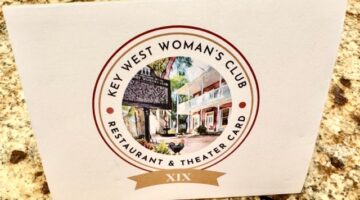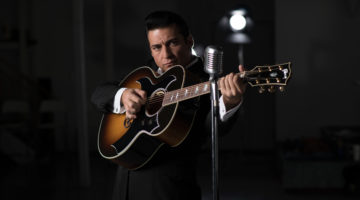Sounds may be divided along Duval
One size will likely not fit all in the city’s commercial district, say city officials about the on-going debate over a proposed new sound ordinance for Key West.
City commissioners have been struggling to balance resident complaints about high noise levels emanating from bars and other entertainment complexes along Duval Street with the owners of those establishments, who say lowering their musical sound levels will hurt business. A proposed sound ordinance was amended at the last City Commission meeting to increase legal decibel levels but allow enforcement officers to come closer to the establishment to measure sound levels, a move some entertainment venue managers say would force them to eliminate live music during the day, when the allowable decibel levels are lower.
That proposal hasn’t seemed to make anyone happy. So at least some of the commissioners are working on another change, one that would set different sound level limits along Duval Street. Commissioner Teri Johnston said she intends to propose dividing Duval into three areas, upper, middle and lower. On lower Duval, up to the 400 block, the allowable decibel levels would be higher because that area already houses multiple entertainment venues with live music. Middle Duval would stretch approximately from the 500 to 900 block of Duval, and upper Duval would run from the 900 block to the end, Johnston said.
“I have every intention of creating levels, either timeframes or decibel levels for upper Duval. Upper Duval was always designated as a quieter area where you go for a quiet cocktail or dinner. [Upper Duval] is really guest houses and hotels like the Southernmost House. To have the same decibel level there until 4 a.m. is really difficult,” she said.
Commissioner Clayton Lopez brought up the same issue at the last City Commission meeting, where he asked city attorney Shawn Smith about “blended” business and residential areas where a neighborhood may be designated commercial for sound level purposes but where multiple residents live.
Smith said the commissioners could legally construct an ordinance that has different sound level requirements. He suggested breaking the sound ordinance into three categories, core commercial, lighter commercial and residential.
“You would look to the specific requirements and uses that have already been set out in zoning districts and find those similarities, like the buffer areas between your core commercial areas and your residential areas where you blend in from really intensely commercial areas to commercial less intense, to residential,” he said.
But dividing the existing commercial area into decibel sections would not get the support of at least one entertainment manager, Maureen Johnson, manager of Willie T’s restaurant and bar, 525 Duval St., which showcases live music during the day and evening hours. Even if Willie T’s were included in the lower Duval area where higher decibel levels were allowed, she said, sectioning the street into entertainment zones would hurt all businesses.
“My business at one end of the street is equally important as one at the other end of the street. Both ends of the street are the same. We all pay a premium to be on Duval Street. We came here with the existing laws and invested in our businesses based on those laws. Now to go and change that, you shouldn’t be able to do that,” she said.
But that argument may fall on deaf ears. Commissioner Johnston said the city has to find a middle ground between what is jarring to residents and what will bring patrons into local bars.
“What it comes down to is you need to be able to contain your music, whether through speaker placement or the bass levels. If the bass wasn’t so prevalent, I don’t think we’d have as many complaints,” she said.
The proposed sound ordinance will come up for a second reading before the city commission at its next meeting on April 1. Public comments will be heard during that discussion.
[livemarket market_name="KONK Life LiveMarket" limit=3 category=“” show_signup=0 show_more=0]


No Comment